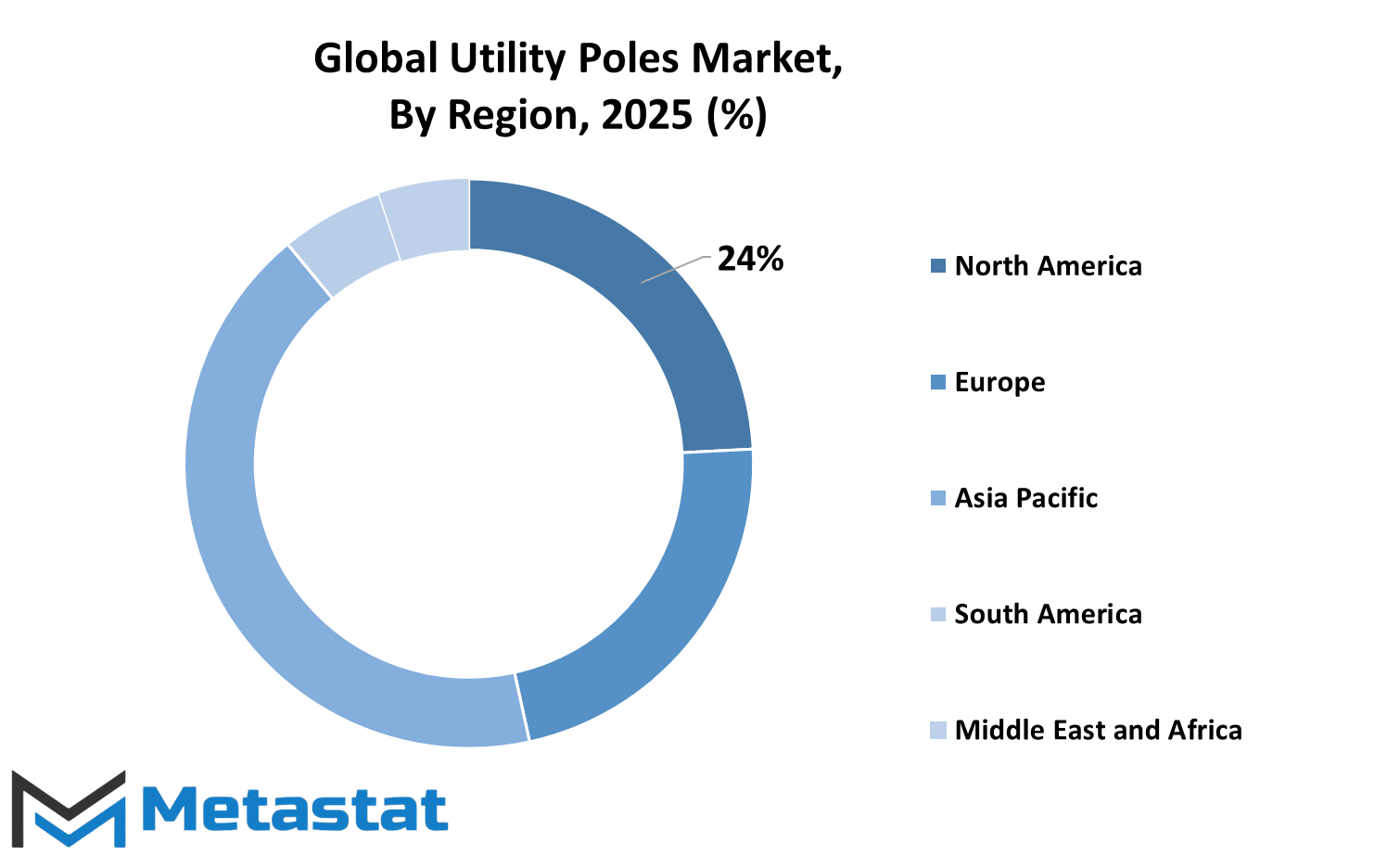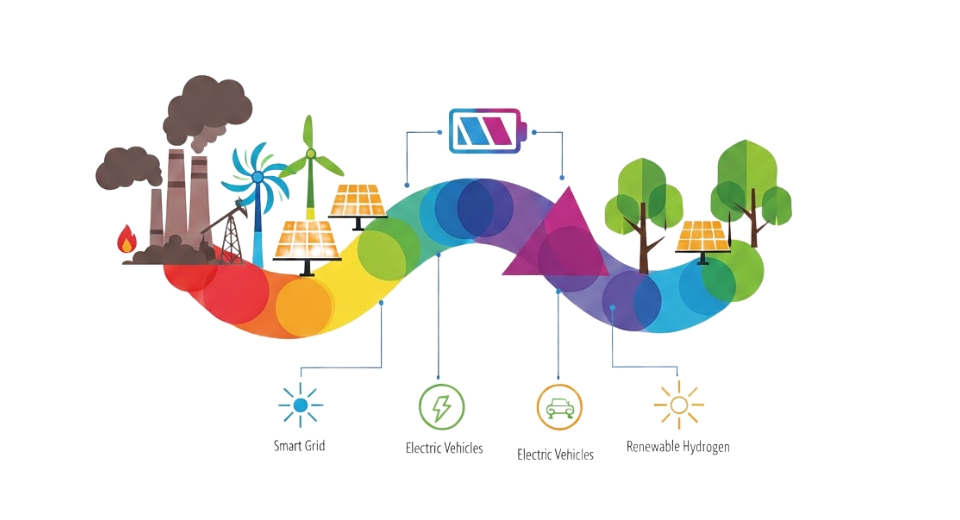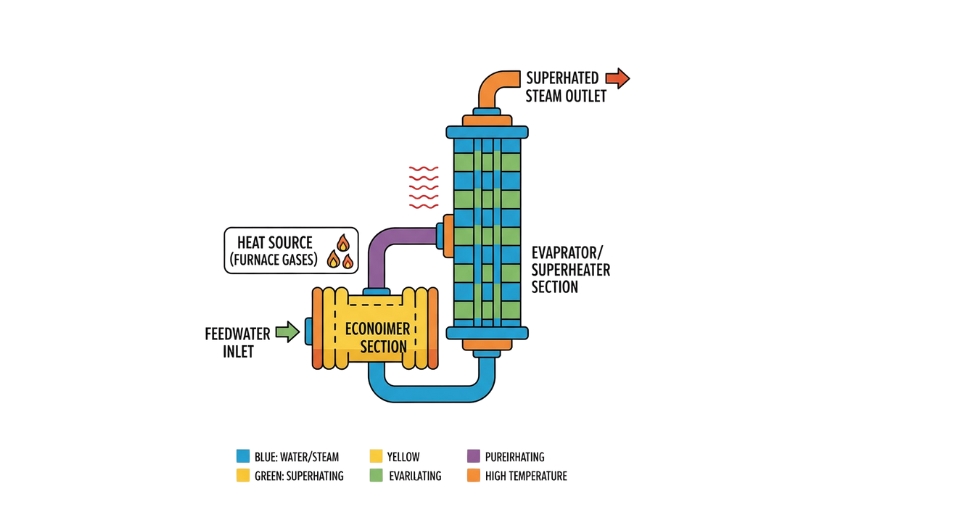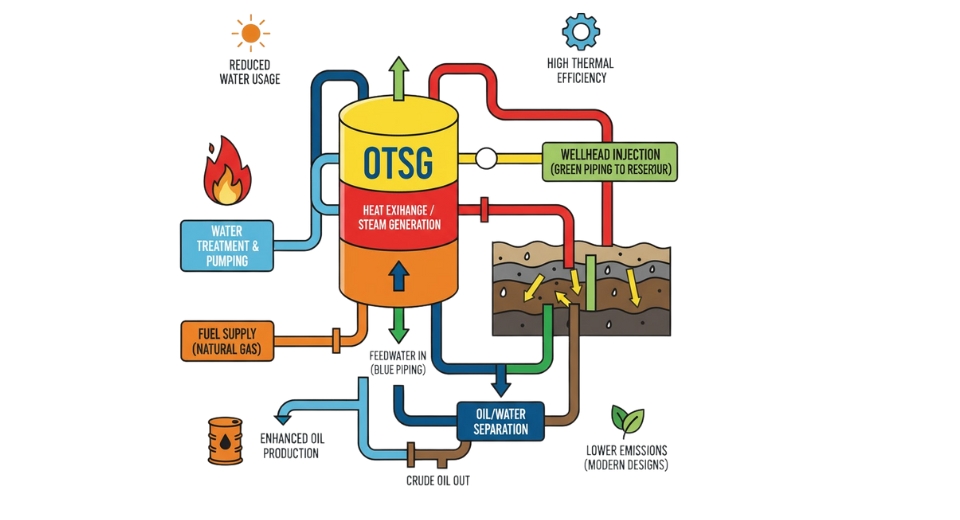MARKET OVERVIEW
This industry is expected to witness remarkable shifts in the Global Utility Poles market as the demand for infrastructure and renewable energy projects intensifies. The future of this market will be defined by advancements in materials, designs, and technology that will increase the efficiency and sustainability of utility poles. Utility poles will become even more significant in the development of power distribution networks, telecommunication infrastructure, and smart cities. Utility poles will be integrated into smart grid solutions, making electricity distribution more reliable and adaptive with cities and rural areas growing.
Evolution in the Global Utility Poles market is likely to be driven by innovation in materials. Utility poles are made of wood, concrete, and steel; however, in the future, advanced composite materials are expected to gain a greater share. These materials will offer higher durability and resistance to environmental factors such as extreme weather conditions, corrosion, and aging. The inclusion of these materials in utility pole designs will make them stronger, longer-lasting, and more cost-effective over time. In addition, these poles will require less maintenance, contributing to the long-term sustainability of infrastructure projects.
The growth of renewable energy will also have a huge impact on the Global Utility Poles market. Because utilities begin to emphasize energy from renewable resources more and more, more utility poles would be used as supporting structures in the development of solar and wind energy. Examples of such adapted utility poles will include small scale solar panels or small-scale turbines, thus paving the way to decentralized power. This development can both support demand for renewable power and increase resilience of the network, thereby significantly reducing reliance on central power generation plants.
In future, smart cities and the demand for digital connectivity will further support the growth of the Global Utility Poles market. Utility poles in the near future will support power lines besides housing sensors, cameras, and other IoT devices that will support monitoring urban environments. Smart poles will provide city planners with real-time data regarding traffic, energy consumption, and environmental conditions to ensure more efficient management of these aspects. They will also provide enhanced security through surveillance systems and facilitate the emergence of next-generation communication networks, like 5G.
As sustainability becomes a key concern worldwide, the utility pole market will also witness a need for more green alternatives. There will be more adoption of green alternatives in the Global Utility Poles market such as recyclable materials and energy-efficient technologies. This shall be in accordance with the emerging global trend towards sustainability, bringing solutions that shall reduce the ecological footprint of utility infrastructure. Developing poles that combine renewable energy generation capabilities can go further to the goal, such that utility poles become an integral part of producing energy rather than just a passive component in distributing power.
In conclusion, the near future of the Global Utility Poles market lies at the nexus of technologically advanced materials, material innovation, and sustainability. The market is poised to adapt to such requirements from renewable energy, smart infrastructure, and environmentally friendly solutions. Utility poles are going to be key parts of modernising power and communication systems, becoming essential aspects in the infrastructure landscape of the world. With the evolution of these changes, the Global Utility Poles market will change and meet the world's ever-increasing needs.
Global Utility Poles market is estimated to reach $81,951.76 Million by 2032; growing at a CAGR of 4.0% from 2025 to 2032.

GROWTH FACTORS
Steady growth of the global utility poles market can be traced from the ever-growing demand for power infrastructure and electrification, mainly in the emerging markets. In this sense, as more and more countries become urbanized and extend their power grids, reliable and efficient distribution systems become even more essential. This trend is expected to spur utility poles growth in the market as they support the power lines that allow for easy flow of electricity. These growing economies, having a population size that demands such energy needs, will have rising demand for utility poles.
In addition to the demand in emerging markets, government initiatives at improving power distribution networks across the globe are also furthering the growth of the utility poles market. Most governments are investing in upgrading their energy infrastructure to provide stable and reliable electricity distribution. Many such programs are associated with replacing antiquated power lines and poles with modern and more robust alternatives, and hence demand for utility poles is increasing. As the emphasis in such programs will be on strengthening the power grid, it is going to have a positive impact upon the global utility poles market by means of long-term investments.
Several constraints are restricting the growth of the utility poles market. For instance, producing utility poles incurs high costs. The reason behind this is because the materials required to make them, such as wood, steel, and concrete, are usually costly. Supply chain issues such as material shortages and transportation delays can further complicate the growth of the market. This could result in increased prices for utility poles and create problems for suppliers in meeting the demand in a timely manner.
Environmental concerns and regulatory restrictions also present obstacles to the growth of the utility poles market. The shift in sustainability would require certain traditional utility pole materials like treated wood to face an environmental test. Strict rules in manufacturing and waste management processes may increase the complexities involved in producing and distributing utility poles. All these, combined with a change towards sustainable alternatives, might make growth pace slower.
On the other hand, there are still several growth opportunities for the utility poles market. Smart grid technology adoption is on the rise; hence, it increases the need for more advanced infrastructure for the successful functioning of the smart grids. Utility poles become the essential parts in the setup and functioning of such grids. The increasing call for sustainability and the need to reduce the weight without compromising on performance have led companies to shift more towards composite utility poles. That is, composites are lightweight in nature, stronger, and much more environmentally friendly. This direction towards more sustainability will open newer avenues for innovating and growing through the utility pole market.
MARKET SEGMENTATION
By Material
The global utility poles market is one of the important infrastructures for the distribution of electricity and telecommunication services. Utility poles play a very significant role in providing stability and reliability to the power transmission system across the world. The market for utility poles is very diverse, and the poles are constructed from several different materials. Wood-based poles are the largest type of material used in this market, valued at $21,035.84 million. This material is popular because it is cheap and readily available, making it the most widely used for utility poles in many regions.
But wood alone is not the material used to make utility poles. There has been an adoption of steel poles because of strength and durability. Steel does not easily deteriorate due to exposure to weather, a factor that renders it to be more appealing to use than wood in extreme climates. The steel pole market has constantly grown with an increasing number of regions seeking replacement solutions for conventional wooden poles.
Other material being used for utility poles production is composites. These are usually made from a mix of materials such as fiberglass, resins, and many others that will provide excellent strength-to-weight ratios. Composite utility poles are much more resistant to corrosion, pests, and natural wear and tear and are thus good for areas where wood or steel might not be the best option. These poles are gaining popularity in coastal or humid environments especially where the old materials decompose faster.
Concrete poles also have a market share, and they have their own advantages, especially in urban areas or regions prone to wildfire. Concrete poles are fire-resistant and can be used for decades with minimal maintenance. They are heavier and more difficult to transport, but they are preferred for certain applications where extra strength and reliability are required.
As demand for energy progresses in relation to increased urbanization, the future of utility poles development and innovation can be expected to advance. Selection of material in the production of utility poles is fundamentally reliant on cost, durability, environmental aspects, and regional conditions. The better understanding of the strength and weaknesses of these materials will be crucial in decision-making for industry in the type of utility poles that would best suit their purpose.
By Pole Size
Based on pole size, the Global Utility Poles market is segmented as it plays an important role in determining the application and functionality of these structures. The market is divided into three categories: Below 40ft, Between 40 and 70ft, and Above 70ft. All of these categories have different purposes as per the infrastructure requirements, environmental conditions, and the type of utilities being supported.
Utility poles up to 40ft are typical for small utility applications like household areas or streets. They come in handy for low-level distribution systems where the required height or length of the line is not great, making the pole a pragmatic solution for providing electricity. High demand for this type of pole typically occurs in a suburban or rural setting where it is necessary for the delivery of utility services while maintaining reliability and safety.
The poles of between 40 and 70ft categories serve a greater variety of purposes. These poles are mainly applied to residential and commercial area high-medium-voltage-transmission lines. With greater heights, the distances for the transmission can increase more with a guarantee that the electricity supply system will be spread adequately across more extensive areas. These poles are also used in environments where the pole needs to withstand more significant wind and weather conditions, offering greater durability and stability. As cities grow, the demand for poles in this size range continues to rise to meet the needs of expanding infrastructure and increased energy consumption.
Finally, poles above 70ft are generally used for high-voltage transmission lines that carry power over vast distances. These poles are necessary to connect power stations to cities and towns, thus they are a critical component of national grid systems. The higher elevation of these poles ensures that the cables remain clear of other obstacles, such as buildings or trees, while also accommodating the necessary power load. Generally, demand for such poles is always more in the urban areas and large industrial projects. The distances between power stations and end-users are significant and need robust, long-lasting infrastructure.
Utility poles are quite diverse, segmented by pole height, serving particular needs for every category. As the demand for energy grows in the world, these poles become crucial to the support of utility networks in all regions so that electricity can be efficiently transmitted to where it is most needed. The market for utility poles, according to pole size, will still continue to change with the increased demands of infrastructure development and urbanization.
By Type
The global utility poles market is an extremely crucial segment in the wider infrastructure and energy industries, as these poles serve as supports for the distribution and transmission of electricity in various regions. Utility poles are essential in supplying electricity to homes, businesses, and industries and thereby form an integral part of modern society's power grid.
Utility pole markets can be broadly classified into two major types: transmission poles and distribution poles. Transmission poles are higher in structure and sturdier structures to carry electricity from power plants across long distances into substations. These poles need to bear pressure and are engineered for withstanding different kinds of rough weather conditions as well as for the heavy lines of electrical force. It becomes a major role in making electricity transmitted smoothly and efficiently throughout big areas such as urban and rural regions.
On the other hand, distribution poles are relatively short and carry lower voltage lines that supply electricity from substations to consumers. These poles are located in residential and commercial areas, providing the final link in the chain of electricity distribution. While transmission poles are designed to handle high voltage and long distances, distribution poles are built for local electricity delivery. Both types of poles are important, with transmission poles responsible for the first stages of the power supply process and distribution poles ensuring that the power reaches end users.
As the world will continue to increasingly demand energy in the future, this will translate into an increased requirement for transmission poles and distribution poles. The latter will be more pronounced through increased urbanization, development of industries, and improvement/modernization of aging infrastructure that is common to many regions in the world. The development of smart grid technology will also call for an increasing number of utility poles because those technologies require strong and efficient transmission and distribution power systems.
The global utility poles market, therefore, forms an important aspect of the energy supply chain. As long as the transmission pole performs its job of supplying electricity over long distances, it is the duty of the distribution pole to ensure that the same electricity reaches the consumer. As the global population keeps increasing and so does the demand for energy, the same holds true for utility poles, thus electricity will flow effortlessly to each and every nook and corner of the world.
By Application
The global utility pole market is heterogeneous, with many applications that significantly support essential infrastructure. Utility poles are crucial in a number of applications, such as electricity transmission and distribution, lighting, telecommunications, and other applications. Each of these segments has a significant impact on the demand for utility poles, thus impacting market growth and development.
One of the key applications of utility poles is for electricity transmission and distribution. Utility poles form the backbone of transportation of electrical power from power plants to homes, businesses, and industrial areas. They support infrastructure that ensures long-distance power delivery with reliability and safety. Therefore, with a growing demand for electricity around the world, robust, long-lasting utility poles are always in demand. This also involves increased renewable power sources, like wind and solar energy, as an increased number of these leads to the installation of new power generation facilities that need a good network of distribution of power.
Lighting is another significant application of utility poles. Especially for street lighting, these poles support the safety of the public at night in an urban setting. Utility poles have also been put up to support the lighting in different sectors, for example, highways, parking lot, and sports facilities. More and more growth of cities and towns around the world increases demand for reliable energy-efficient lighting. This trend is likely to increase the demand for utility poles, especially those that can carry modern, energy-saving lighting systems.
Telecommunications is one of the fastest-growing sectors where utility poles are of paramount importance. These poles support communication lines for telephone and internet services, and hence they form a vital part of modern communication networks. With the advent of mobile communication, expansion of the internet, and demand for faster and reliable data transmission, there is increased demand for utility poles to enhance telecommunications infrastructure. As technology improves, utility poles will continue to be required in supporting 5G networks as well as other communication technologies.
Utility poles are used in application other than the electricity, lighting, or telecommunication applications discussed above. Examples include supporting security cameras, traffic control devices, or even weather monitoring systems. While these applications might not be the most significant percentage of the market, they still find their place within the overall demand for utility poles and support a wide variety of functions needed to sustain a modern society.
In conclusion, utility poles are primarily used in the applications of electricity transmission and distribution, lighting, telecommunications, among others. Their demand is thus expected to continue to grow in these sectors as urbanization continues and technology advances, influencing the future of the market.
|
Forecast Period |
2025-2032 |
|
Market Size in 2025 |
$62,305.62 million |
|
Market Size by 2032 |
$81,951.76 Million |
|
Growth Rate from 2024 to 2031 |
4.0% |
|
Base Year |
2024 |
|
Regions Covered |
North America, Europe, Asia-Pacific, South America, Middle East & Africa |
REGIONAL ANALYSIS
Geographical segmentation of the global Utility Poles market has been done into five major regions: North America, Europe, Asia-Pacific, South America, and the Middle East & Africa. The major countries included in each of these regions are various. North America includes the United States, Canada, and Mexico. Europe is further divided into the United Kingdom, Germany, France, Italy, and the rest of the continent, which falls under Rest of Europe.
The Asia-Pacific region, which has a significant share in the market, includes India, China, Japan, South Korea, and other countries in the broader Asia-Pacific area, referred to as Rest of Asia-Pacific. South America consists of Brazil, Argentina, and the other countries grouped under Rest of South America. It is split further into two key regions of GCC and the remaining countries called as Rest of Middle East & Africa, where both include Egypt, South Africa among others in their respective geographical pockets.
It becomes even easier to perceive the kind of market conditions created in such separate geographical boundaries, for instance how the utilities requirement is taking form in North America. The utility poles market in Europe will be affected by the shift to renewable energy sources and infrastructure upgrades. The Asia-Pacific region, being a rapidly developing economy, will experience growth as a result of urbanization, industrialization, and increased demand for energy. On the other hand, the infrastructure need in South America would provide an outlook to shape the market whereas investment in Middle East & Africa energy and utility infrastructures, therefore is estimated to drive it ahead.
Trend by challenges or opportunities within every region remains distinct; in case of North America, technology drivers would influence this region in market trend due to the application of smart grid, but the other is European-utility infrastructural, being environmentally efficient. Asia-Pacific's focus will be on meeting growing energy demands and urbanization trends. South America's focus is on addressing utility gaps, and Middle East & Africa will continue investing heavily in the energy and utility sectors to serve its growing population and industrial expansion.
Individual regions could be analyzed for a specific forecast on their growth trajectory as well as specific challenges and opportunities related to them. It could aid in decisions about investment planning and expansion from businesses, governments, and others concerned with investment in specific markets.

COMPETITIVE PLAYERS
Global utility poles serve to support all infrastructures for providing the service delivery of essential commodities such as electricity, telecommunication, and internet. Some of the significant companies in this market are: Valmont Industries Skipper Ltd. Stella-Jones Inc. Nippon Concrete Industries Co., Ltd. Pelco Products, Inc. FUCHS Europoles GmbH NOV RS Technologies Inc. Hill & Smith PLC Sabre Industries, Inc. Creative Pultrusions, Inc. Mitaş Omega Factory Koppers Inc. Hitachi Energy Ltd. These firms add to the market's growth by offering various types of utility poles, mainly made of wood, concrete, and steel, in accordance with different geographical requirements and environmental parameters.
Valmont Industries, Inc. is one of the leading manufacturers with a broad utility pole offering from traditional to high-performance poles. Their products are widely used in utility and telecommunication infrastructure projects. Skipper Ltd. is another name that has earned recognition, particularly in producing poles and other allied materials for electricity and telecom. Their innovative solutions support local as well as global needs.
Stella-Jones Inc. is a dominant wood utility pole company with an emphasis on North America. It has gained a strong footing in the market by providing sustainable solutions that last a long time. Companies like Nippon Concrete Industries Co., Ltd., which have major involvement in concrete poles, and Pelco Products, Inc., a company that specializes in fiberglass poles, have provided various benefits such as increased durability and resistance against harsh weather.
Other significant players in the market are FUCHS Europoles GmbH, NOV, and RS Technologies Inc., each with its utility pole solutions. FUCHS Europoles GmbH is known for its steel poles, while NOV offers composite poles that are lightweight yet strong. RS Technologies Inc. specializes in technology-based solutions, including advanced materials for superior performance.
Hill & Smith PLC and Sabre Industries, Inc. are distinguished from others by offering a wide variety of utility poles, including electric and telecom infrastructures. Creative Pultrusions, Inc. specializes in composite materials for those customers who are looking for strength and corrosion-resistant poles. On the other hand, Mitaş and Omega Factory specialize in specific solutions in Europe and Asia, ensuring the diversity of markets is met by the environment of the regions.
Koppers Inc. and Hitachi Energy Ltd. also make a big difference, as utility poles and their related products, which they manufacture, are held to the global standards of performance and safety. The competition from these companies has led to innovation and various options for utility pole installation, which makes the global utility poles market an integral part of infrastructure development worldwide.
Utility Poles Market Key Segments:
By Material
- Wood
- Steel
- Composites
- Concrete
By Pole Size
- Below 40ft
- Between 40 and 70ft
- Above 70ft
By Type
- Transmission Poles
- Distribution Poles
By Application
- Electricity Transmission & Distribution
- Lighting
- Telecommunications
- Others
Key Global Utility Poles Industry Players
- Valmont Industries, Inc.
- Skipper Ltd.
- Stella-Jones Inc.
- Nippon Concrete Industries Co., Ltd.
- Pelco Products, Inc.
- FUCHS Europoles GmbH
- NOV
- RS Technologies Inc
- Hill & Smith PLC
- Sabre Industries, Inc.
- Creative Pultrusions, Inc.
- Mitaş
- Omega Factory
- Koppers Inc.
- Hitachi Energy Ltd.
WHAT REPORT PROVIDES
- Full in-depth analysis of the parent Industry
- Important changes in market and its dynamics
- Segmentation details of the market
- Former, on-going, and projected market analysis in terms of volume and value
- Assessment of niche industry developments
- Market share analysis
- Key strategies of major players
- Emerging segments and regional growth potential








 US: +1 3023308252
US: +1 3023308252






